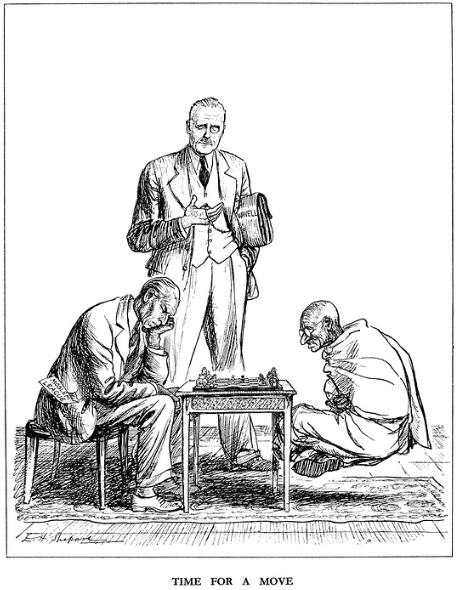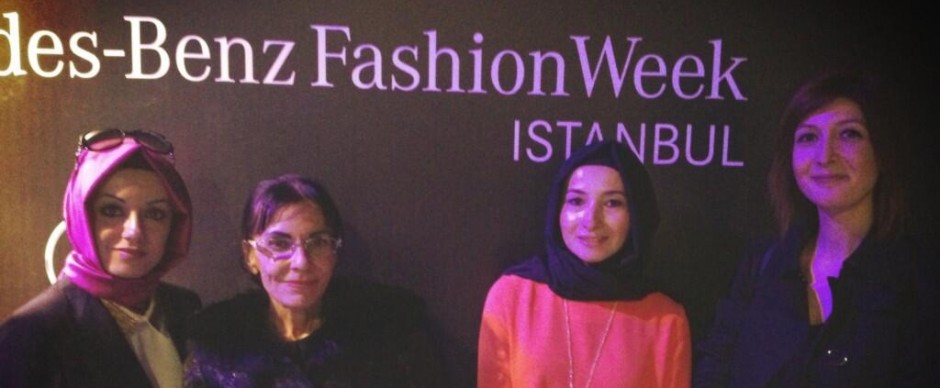When the British came to India they made distinctions between the Hindus and Muslims living there based on experiences that the Western world had already had with Muslims, namely the idea of a simple and unified ‘Muslim world’ (Aydin, p.3). Muslims were seen as violent and threatening to the British goals, and so had to be effectively controlled, while Hindus were seen as docile and easy to rule over. This distinction, however, did not appear to include Islamic mysticism, or Sufism, which seemed to fall outside of the bounds of the problematic idea of the ‘Muslim world’.
Sufism has been seen as an offshoot, sect or even a way of practicing Islam, that primarily focuses on the idea of love and selflessness in order to lead the seeker to ultimate knowledge or haqiqa, with arguably less emphasis on the rules of sharia which have often been the identifier for Islam (Akman, p.2). This is with the intention of raising one’s self up to join with the Divine. The perceived peacefulness spiritual practices of Sufis have long resonated with western Christians who maintain interest in or even convert to Sufism. This has meant that Sufism has often not been considered to be a part of Islam but as something else entirely that is accessible to non-Muslims. Even amid all the western fears that Islam was a unitary force coming together to fight the west, same everywhere and equally frightening, Sufism has remained a domesticated and simplified separate thing with at best an unfortunate link to the dangerous world of Islam.

Lawaih-e-Jami by Hidayat Ullah Sherazi. 18th c. Lahore Museum, Lahore, Pakistan. Via Google Arts & Culture.
Persian script from the 18th century showing a Lawaih, which literally means ‘flash of light’. This is a treatise on Sufi theology, where this one is written by prominent mystic and poet Nurudin Abd Rehman Jami, who had lived in the 15th century. The Persian influence from Mughal leaders who had ruled in India before British colonisation continued to have a strong impact. How did the British make sense of Muslims in India when they saw beautiful religious artwork like this that didn’t necessarily fit with their conception of the ‘Muslim world’?
Sufism was seen as different, and often still is. It was special and welcoming and so very attractive for the Orientalising West who encountered it, nothing like the harsh and legalist Islam that they knew (Akman, p.6). Orientalists labelled their discovery of this peaceful mysticism as a form of spirituality rather than religion, accessible and encouraged for Christians and secular thinkers alike (Akman, p.6). For Western thinkers Sufism seemed to be a strange addition to Islam, it did not fit neatly into their conceptions of what Islam must look like. Yet for those practising Sufism, it made no sense to separate them from the rest of Islam because in that case, their faith would have no meaning. This kind of split in understanding may help us to better understand the problem of the ‘Muslim world’ as something so pervasive and powerful.
The most popular concept of Islam was this image of an all-encompassing, legalistic and violent religion. The unified so-called ‘Muslim world’ lumped together with groups from all over the world. This was one of the reasons that the British chose to pit Muslims and Hindus against each other so that they could not rise up against the (outnumbered) British in charge.
An interesting figure to look at was Sir Syed Ahmed Khan who was a Muslim yet also a friend of the British and loyal to the throne. We can look at him to understand an example of who the British were actually communicating with when they were talking with Muslims. Khan (p.7) made a response to his contemporary, W.W. Hunter, in defence of his fellow Muslims, making the case that they are not so different from the British and trying to convince them that he could juggle both identities in an effective manner. His presentation of the problem of Indian Muslim ability to co-exist with the British in charge is complicated by the fact that as a wealthy and privileged individual, with access to British education and a pronounced loyalty to the crown, he can’t really represent the majority of the many Muslims existing in colonial India. By looking at Sir Khan we can understand the problematic assumed state of the United ‘Muslim world’ through his explanations of the communication happening between the elite Muslims and their British counterparts, he fails to complicate Muslim identities.
Of course, some Sufis also felt the tension between their faith and the British rule. Even though they may not have been associated with the legalistic side of Islam, Sufi scholars also produced fatwas, answers to specific questions based on their understanding of the religious texts and personal judgement as professionals. Ernst explains that one major effect of colonialism was that it “led to the breakup of scholarly networks previously supported by Muslim patronage… in favour of a focus on authoritative Islamic texts” (p. 250). One Sufi school that arose from this need to go back to the core Muslim texts, rather than focusing on non-religious matters was the Deobandi Reform group. This group during the British Raj strove to fight against British influence.
Rashid Ahmad Gangohi was a member of the Deobandi Movement, which aimed to save Islam from western influence through the use of formally trained scholars and advocated the Hanafi legal school of jurisprudence. Two of Gangohi’s fatwas show the practical ways in which Muslims living in India should live and offers a glimpse into the ways they were encouraged to resist the influence of British colonials (p.541). The fatwas do not seem to be overtly political, nor do they even mention the British rule in India during that period. They do however aim to solidify the goals of Muslims living in India, reiterating the proper reasons for making the journey to Hajj as well as speaking on the value of being a good example. In contrast with the Khan’s attempt to bring Islam and the British together, Gangohi’s fatwa almost ignores the political climate and asks that the devout Muslim do their duty to remain in a less holy Land in order to be a good example. This is a kind of resistance, in so far as the individual that is praised, is one that does not abandon their peers for their own perceived religious well being. This comes back around to the idea of Sufism as being focused on selflessness, putting the religious wellbeing of others before ourselves, yet also shows the ways in which they may have been rebellious in their resistance.
 This satirical cartoon illustration from the British Magazine Punch, shows Mahatma Gandhi playing a game of chess against Muhammad Ali Jinnah who was the leader of the Muslim league in India and who would go on to become the Father of Pakistan. Looming over them, watching the game with a look of worry on his face is the British Viceroy of India, Archibald Wavell.
This satirical cartoon illustration from the British Magazine Punch, shows Mahatma Gandhi playing a game of chess against Muhammad Ali Jinnah who was the leader of the Muslim league in India and who would go on to become the Father of Pakistan. Looming over them, watching the game with a look of worry on his face is the British Viceroy of India, Archibald Wavell.
Regardless of Muslim resistance or Muslim friendship, Western ideas of Islam couldn’t escape the alluring image of the unified ‘Muslim World’. The image above is based towards the end of British rule in India, during the fight for independence and calls for decolonisation. It is interesting to note the way the British artist has drawn the Muslim representative, who is dressed almost identically to his (British) superior. This could show us the way that the Western world regarded Islam, similar to themselves in terms of motivations yet racialised The only things distinguishing Jinnah as different from Wavell are his facial features and darker skin colour, reminding the British audience that he is still an ‘other’ no matter how he is dressed. This is opposed to the orientalised image of Gandhi floating serenely in robes. Images like this show the power dynamics in play, with Jinnah and Gandhi on the same level under the British man, showing both figures as the domesticated versions of the experiments of their respective religions, totally under control and made to fight each other.
The myth of the unified ‘Muslim World’ has persisted long after India went through Partition and the British Raj ended but conceptions of Sufism have not changed much. British attitudes towards Muslims shaped the ways in which the Western World continues to see them today. We can see the ways in which the Muslim elite and Islamic scholars fought for their rights to be recognised as different from the harmful and pervasive stereotype being used to define them.
Bibliography:
Aydin, Cemil. “The Idea of the Muslim World, a Global Intellectual History”, Harvard University Press, 2017.
Gangohi, Rashid Ahmad. “Two Fatwas on Hajj in British India,” pp. 539-542 in The Norton Anthology of World religions- Islam, edited by Jack Miles, W.W. Norton and Company.
Guenther, “A Colonial Court Defines a Muslim”“A Colonial Court Defines a Muslim,” in “Islam in South Asia in Practice” edited by Barbara D. Metcalf, Princeton University Press.
Khan, Syed Ahmed. “Review of Dr Hunter’s Indian Musalmans” (London: 1872) Lahore Premier Book House.
Akman, Kubilay “Sufism, Spirituality and Sustainability / Rethinking Islamic Mysticism through Contemporary Sociology,” Comparative Islamic Studies, 06/2010, Volume 4, Issue 4.1-4.2.
Ernst, Carl W. “Reconfiguring South Asian Islam: From the 18th to the 19th Century”, The University of North Carolina at Chapel Hill
https://www.google.com/culturalinstitute/beta/asset/lawaih-e-jami/2gF0-tw_zoOAeQ
https://punch.photoshelter.com/img/pixel.gif
